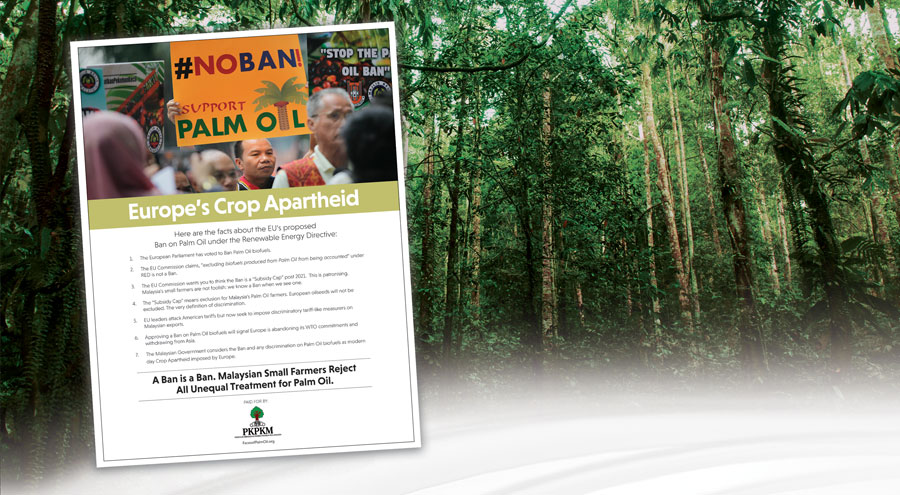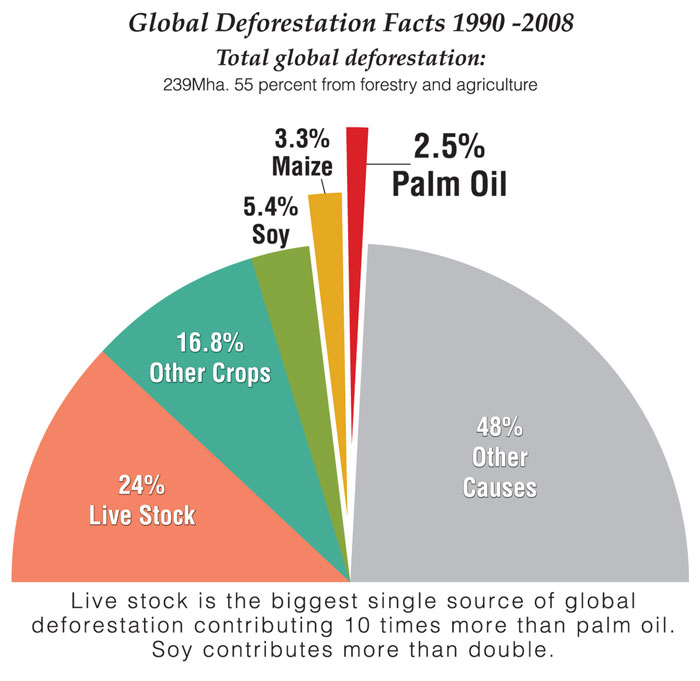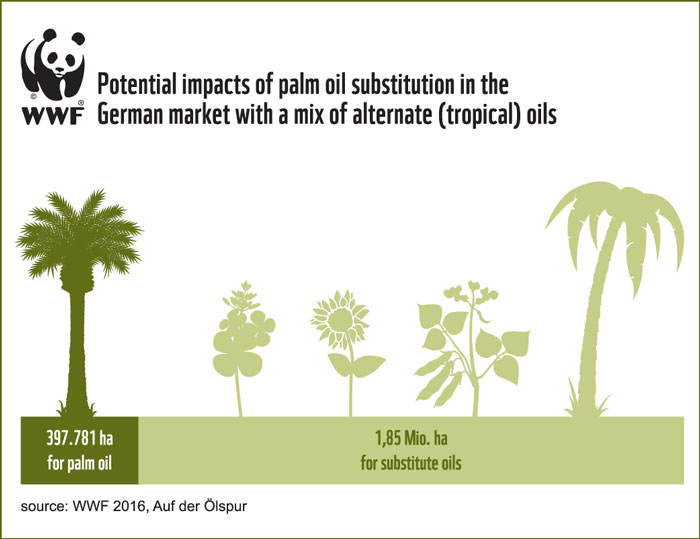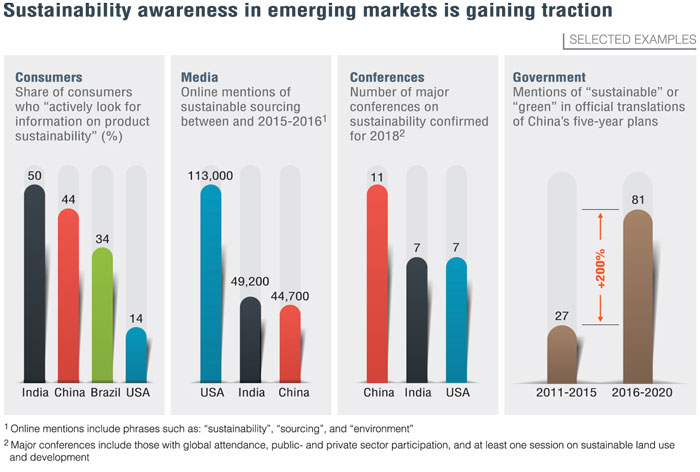



Industry must step up social media engagement to fight fake news
October, 2018 in Issue 3 - 2018, Comment
Attempts to tarnish the image of palm oil
Many misunderstandings exist about palm oil, with several myths having found their way into public discourse due to aggressive campaigning by NGOs. These public relations campaigns have several disguised goals. The underlying intention, however, is to tarnish the image of palm oil in the eyes of the consumer, and ultimately, influence their purchasing behaviour.
The campaigns also serve as a push for policy makers to implement barriers or further discriminate against palm oil.
With the help of these aggressive campaigns, and dominance of the media debate, the lobbying power of these policy makers is increased, and they can find willing allies in governments and parliaments across Europe to push for further anti-palm oil laws and regulations.

Blatant discrimination
Among the most evident forms of discrimination against palm oil is the use of ‘no palm oil’ labels on food products. Manufacturers are taking advantage of consumer sentiment and using these labels on their products to gain market share. This is damaging as it suggests that palm oil, and products containing palm oil, are harmful and should be avoided. Unfortunately, the governments of many European countries are still refusing to enforce the law and put a stop to this practice.
The ‘no palm oil’ labels are a clear form of discrimination by manufacturers as the EU Food Information to Consumers (FIC) Regulation already includes the mandatory labelling of palm oil on all food products.

Tough competition
European agriculture – particularly oilseeds – is famous for being inefficient and expensive. It is therefore no surprise that palm oil – its more efficient and cost-effective rival – commands significant market share. Finding this difficult to accept, European oilseed giants are believed to be backing multi-million-dollar lobbying campaigns in favour of protectionist laws against palm oil in Europe.
It is the three-pronged nexus of NGO campaigns, the rich European industry, as well as protectionist politicians, which is driving anti-palm oil efforts in Europe.
Complacency not an option
A crucial point to remember is that, so far, none of these campaigns have succeeded. Palm oil remains a major player in both the food and biofuel market in Europe – and around the world.
However, complacency is not an option. Consumers who have been exposed to the campaigns either through social media or other media platforms, have begun lobbying for their Parliamentarians to impose more regulations on palm oil. Parliamentarians, in response, are seizing this as an opportunity to garner votes.
In 2010, the “Truth in Labelling – Palm Oil Bill”, which requires the labelling of palm oil in food products, was tabled in the Australian Parliament. MPOC was invited to present a testimony on the Bill to the Senate Community Affairs Committee, after which, the Australian Senate dropped the Bill. Clearly, the claims made against palm oil were unsubstantiated.
New strategies employed by NGOs
The most recent campaign launched by Greenpeace, using the orang utan as a symbol to gain sympathy, is a clear example of using emotional, consumer-focused messages to achieve an agenda.

This was confirmed by Greenpeace’s UK head John Sauven himself, who said that the NGO hopes taking a “heart over head” approach in its latest campaign will engage consumers at an emotional level, rather than just hitting them with “cold hard facts”. Sauven says, “Too often people get lots of statistics thrown at them regarding biodiversity and environmental concerns that can come across as quite cold. I don’t think people can really use that information. If you want people to take action, you need to find a way to motivate them to take action”.
New threat for the industry
While we may have thought that palm oil producers can now relax, with the ban on palm biofuels having been lifted under the Renewable Energy Directive (RED), the most recent campaign by Greenpeace shows that this is just the first of many bumpy rides ahead.
The simple reality is that the opponents of palm oil in Europe will not stop. Their opposition may be irrational, but it is consistent.
The #1 regulatory threat facing palm oil in Europe is a new plan to develop a list of “high risk” biofuels to be phased out in the coming years. This “high risk” debate has far wider consequences than the RED Directive episode.
The outcome will be used by anti-palm oil campaigners to push for restrictions across-the-board for “high-risk” products.
Emotionally-driven campaign
Anti-palm oil activists have released an animation, with timing that is designed to pressure officials in Brussels and convince them to place palm biofuels in the “high risk” list. It was released on 19th August, in conjunction with International Orang Utan Day.
It shows “Rang –tan” causing mischief in a little girl’s bedroom. The little girl asks the animal why it ended up in her room, and it replies that its home has been destroyed due to palm oil. The NGO uses animation to engage with its audience, making them imagine how an animal would feel about losing its home. The NGOs continuously and consistently recycle their emotionally-driven messages through multiple channels of communication, creating a multiplier effect and ensuring that their messages get maximum exposure.
The truth about deforestation
It is far too simplistic to claim that palm oil is the cause of deforestation. The FAO in the past has stated that the cause of deforestation in developing countries is poverty – the clearing of land for habitat, subsistence farming and fuel.
A study by the EU Commission in 2013 revealed that the primary agricultural cause of global deforestation is livestock farming and soy production. It states that about 28% of global deforestation is due to crops and 24% is from livestock farming. This makes livestock the actual biggest source of global deforestation. The largest source of deforestation from crops, on the other hand, is soy (5.4 %), followed by maize (3.3 %) and then oil palm (2.5 %).

Source: EU Report 2013 – The impact of EU consumption on deforestation. Comprehensive analysis of the impact of EU consumption on deforestation.
According to Imazon, a Brazilian NGO, deforestation in Brazilian Amazon continues to trend higher. Deforestation increased most sharply over the past year in the states of Pará and Tocantins, both of which saw forest clearing rise by more than 2,000 percent relative to the prior year. Both states — which ranks second in gross forest loss over the past year — produce large volumes of soy and cattle, which are the largest direct drivers of deforestation in the Amazon. Given the recent trade spat between China and US, exports of soybean and beef to China are expected to increase.
It is important to note that the oil palm is the most productive and land-efficient oilseed crop. Substituting oil palm with other oil seed crops would result in a higher utilisation of land area, an increase in GHG emissions and more damage to wildlife, according to a 2016 WWF report.

Prudent use of land
The Malaysian Government’s decision to adopt an agricultural diversification policy led to the introduction of oil palm. The shift brought substantial benefit to the country, ensuring the social and economic well-being of its people. In Malaysia, oil palm occupies only 5.8 million ha while the global oil palm area stands at only 19 million ha.
Across the world, increasing demand for food, in line with a growing population, has resulted in the conversion of forests into agricultural land in Europe, the US, Latin America and even in Asia.
Malaysia, on the other hand, has pursued a balanced and prudent model. More than 20 years since it made a promise at the Rio Earth Summit in 1992 to maintain at least 50% of land as forest cover, Malaysia still maintains 54% of its land area under forest cover.
Sharing the burden of sustainability
NGOs should change their tune and support sustainable land-use in developing countries, rather than resorting to campaigns that harm small farmers. Small farmers will readily adopt more stringent sustainable practices if they are fairly compensated for their efforts.
Unless there is a premium obtained for the end-product, small farmers may not see the benefit of adopting of such practices.
NGOs should focus their efforts on pushing buyers to pay a premium for certified sustainable palm oil. It is only fair that the cost and burden of sustainability is shouldered by all players and not only by producers.
Social media as the new battleground
The reality is that the industry will continue to face challenges from the triple threat of NGOs, Western competitors, and protectionist politicians. However, today, much of the debate about what is fact and what is fiction is happening on the social media platform.
Smartphones, tablets and laptops have become the battleground for public opinion, and it is crucial that the industry recognises this and strive to engage with the public. Otherwise, they will not hear us.
Winning this battle in today’s challenging environment, requires effective engagement with a wide range of audiences. We need to have an on-going conversation about palm oil with consumers and stakeholders.

Source: Accenture & United Nations Global Compact; Google; Conference Alerts; national government sources; AlphaBeta analysis.
Making consumer education a priority
Consumer campaigns are another form of engagement that we must pay attention to in addition to public affairs and political engagement. Many catastrophes such as the famous Nutella Tax, and the RED, have been prevented by aggressively defending Malaysian palm oil through campaigns. This work must continue.
The burden of debunking misconceptions about palm oil and preventing consumers from being misled by NGO propaganda lies largely on the shoulders of palm oil producers.
Responding to external pressures and fake news – and ensuring that they are instead presented with fairly and accurately is no small task, but the industry must make it a priority to educate and enlighten our consumers and stakeholders. The time to do this is NOW.
Belvinder Sron
Deputy CEO/Editor GOFB
bel@mpoc.org.my